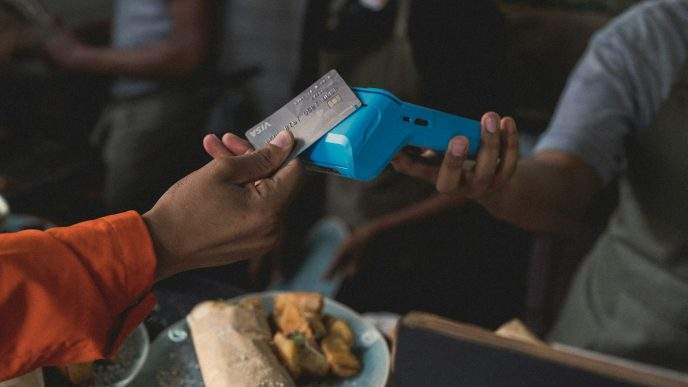A new study published by Flash reveals that the world’s 1.57 billion freelancers are losing $3.69 trillion each year to invoicing and payment-related fees.
From transaction charges to withdrawal costs, these fees eat into earnings, often without freelancers realizing how much they’re giving up.
Flash, a bitcoin payment startup, wants to let freelancers keep 100% of what they earn.
Table of Contents
The Real Cost of Getting Paid
Most freelancers use tools like PayPal, Upwork, Stripe, or Payoneer. These platforms help with billing and payment collection, but they also take a cut.
Let’s say a freelancer sends a $1,000 invoice to a client using a typical platform like PayPal. Here’s how the fees break down:
| Fee Type | Amount | What It Means |
| Platform fee (2.99% + $0.49) | $30.39 | 2.99% of $1,000 = $29.90$29.90 + $0.49 = $30.39 |
| Cross-border fee (+1.5%) | $15.00 | 1.5% of $1,000 = $15.00 |
| Currency conversion (3.5%) | $35.00 | 3.5% of $1,000 = $35.00 |
| Total loss per $1,000 | $80.39 | $30.39 + $15.00 + $35.00 = $80.39 lost $80.39 ÷ $1,000 = 8.039% total fee |
That’s over 8% gone before you even think about withdrawing the money to your local bank, which might cost more if it needs currency conversion.
Small Cuts Add Up
Say a freelancer earns $2,000 per job and completes 12 jobs a year. Here’s what that looks like across popular platforms:
| Platform | Annual Loss |
| PayPal (2.99%) | $717.6 |
| Upwork (15%) | $3600 |
| Freelancer.com (10%) | $2400 |
| Total | $5,520 per year |
Now scale that to millions of freelancers.
If just 100 million freelancers each send $1,000/month, and pay an average of 3% in fees:
→ 100M × $1,000 × 12 × 0.03 = $36 billion/year
That’s a conservative figure. The actual annual loss? $3.69 trillion, according to the study.
How To Get Paid Without Fees
A new solution that’s already gaining traction is Flash, a bitcoin-based payment and invoicing tool designed specifically for freelancers.
Founder Pierre Corbin explains: “Intermediaries ‘take’ $3.69 Trillion in fees from Freelancers, we can stop that”.
Unlike traditional platforms, Flash:
- Charges no platform fees
- Doesn’t hold your money (non-custodial)
- Doesn’t require ID verification
Payments go directly from the client to the freelancer; wallet to wallet, instantly.
Here’s how it compares:
| Feature | Flash | Traditional Platforms |
| Platform fees | 0% | 3–4% per transaction |
| Custody of funds | Non-custodial (you have control) | Platforms hold or process funds |
| KYC/Identity verification | Not required | Often mandatory |
| Payment speed | Instant (on-chain or Lightning) | Hours to days |
| Privacy | High (minimal data shared) | Personal data is often required |
Flash launched Invoicing in June 2025. Since then, thousands of freelancers have started using it to avoid fees and take control of their earnings.
It works by allowing freelancers to send branded invoices with a built-in Bitcoin payment link. The client clicks, pays, and the money lands in the freelancer’s wallet immediately.
With Flash, Pierre and his team aim to help solve a problem he experienced firsthand when his film was demonetized on a major video streaming platform, leaving his money locked for months.
Why It Matters
Most freelancers aren’t sitting on high margins. Many are students, parents, or professionals in emerging economies who work from job to job.
When fees swallow 5–10% of every invoice, that’s rent, food, education, or healthcare that falls short.
It’s not just about losing money. Delays in withdrawals, currency conversion problems, and account holds also slow cash flow and increase stress.
Freelancers aren’t just workers. They’re small businesses, self-employed, entrepreneurs. They are responsible for turning a profit and shouldn’t lose thousands each year just for receiving payments.
What About Bitcoin Volatility?
This is a valid concern, but it’s manageable. With tools like Flash, freelancers can receive instant Bitcoin payments without platform fees or third-party custody.
For European customers, Flash also offers instant Euro conversion with its partner Bringin.
Other options for “stable” currency are stablesats or USDT using wallets like blink, speed, aqua and others.
Recent data also shows Bitcoin’s price is becoming more stable, with volatility in May 2025 reaching its lowest level in over a year. That makes it a more realistic option for invoicing than many assume.
Conclusion
Right now, freelancers are paying billions just to collect what they’ve earned. The system wasn’t built for them; it was built for “fiat tollbooth operators” who keep the whole world hostage and in financial gridlock.
But that’s starting to change. Startups like Flash are using disruptive innovation such as the Lightning Network to cut these fees and build open networks.
They’re offering an option. A way to send an invoice, get paid instantly, and keep 100% of what’s yours. For freelancers around the world, that’s a solution whose time has come.















